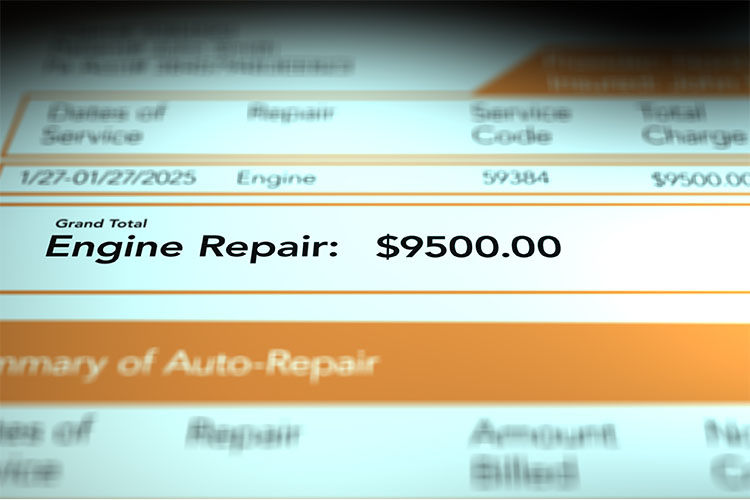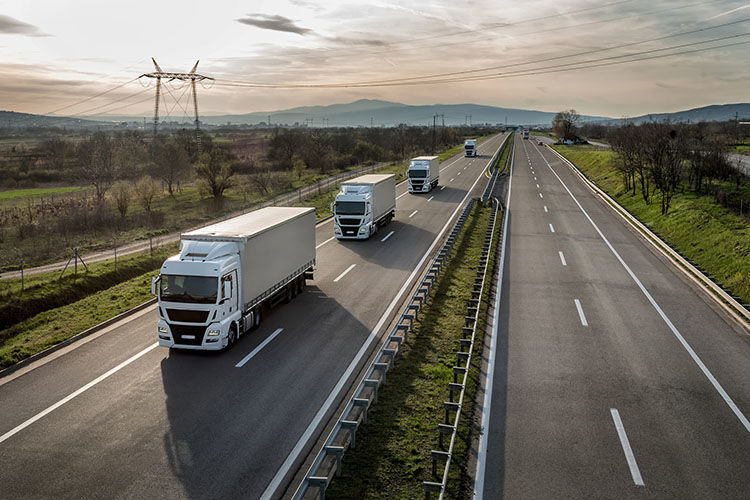Navigating the EV Transition: Key Considerations for Fleet Electrification


Navigating the EV Transition: Key Considerations for Fleet Electrification
The shift to electric vehicles (EVs) is a hot topic, especially for commercial fleets. What was once a futuristic idea is now a tangible reality for countless businesses across the country. However, this transition is about much more than simply swapping an ICE vehicle for an electric one. It involves understanding and strategizing for a new energy ecosystem.
In a recent podcast discussion, Reid Gustin, Director of Software and Sales with PowerFlex, broke down the critical steps to a successful and profitable transition to EV adoption.
The "Before You Buy" Checklist: More Than Just a Vehicle
Before a business ever commits to an electric vehicle, there are several key considerations that need to be addressed.
"Purchasing the commercial EV is only one consideration for managers weighing fleet electrification," Gustin explains. "It's not just about which vehicles to buy, but also how to manage their charging, including where and when to charge, the associated costs, and if their site has sufficient energy capacity. There’s a lot to think about.”
With that in mind, here are some key areas to explore when starting your electrification journey:
- Charging Management and Uptime: Maximizing operational reliability means choosing the best charging locations, times, and number of chargers to keep vehicles ready. Consider route analysis, battery size, and range when planning.
- Property Ownership: Your charging solution will look very different depending on your property status. If you own your property, you’ll need to assess its energy capacity and plan for any necessary infrastructure upgrades. If you lease, your first step should be to work with the property owner to gauge their interest in installing charging infrastructure.
- Charger Types: Not all chargers are created equal. Businesses must understand the difference between Level 2 (AC) and DC fast chargers. Choosing the most optimal charger for your fleet’s dwell time and energy needs is key to reducing capital and ongoing costs.
Navigating the Hidden Costs and Common Mistakes
The path to electrification is full of unexpected twists and turns. As companies pioneer this new territory, they are clearing the path to adoption with real-time experience. To help others avoid common pitfalls, here are some key challenges and hidden costs that often arise:
- Operational Bottlenecks: A lack of consideration for operational flow can create a significant bottleneck if all vehicles return to the depot and need to charge at the same time. This impacts operational uptime and reliability.
- High Capital Costs: Deploying expensive DC fast chargers when slower, lower-cost Level 2 AC chargers would suffice for overnight depot charging can lead to unnecessarily high capital costs.
- Increased Operating Costs: The simultaneous charging of many vehicles can lead to significant demand spikes on electricity bills, a cost often overlooked by fleet operators focused on fuel costs.
- Retrofitting and Re-trenching: Not "future-proofing" the initial installation by laying all necessary conduit and doing trenching upfront can lead to much higher costs when expanding later.
- Public Charging Expenses: If a company doesn't own its property or build its own infrastructure, relying solely on public charging can be more expensive and less reliable, especially in "charging deserts."
The Power of a Proactive Strategy and Long-Term Vision
The solution to these challenges lies in a proactive approach and a long-term plan. This means not just solving for the present but anticipating future growth.
- Proactively Monitor and Control: Even for smaller fleets, having a system for real-time monitoring and remote control (e.g., alerts, start/stop charging sessions), enables managers to quickly address any issues.
- Consider On-Site Energy: Deploying on-site solar and battery storage can help flatten out energy costs as the fleet electrifies and demand increases.
- Utilize Credible Solutions Providers: Partnering with an experienced company, like PowerFlex, or a solutions partner that will connect you with underutilized charging stations, is crucial for a successful EV transition.
Navigating the Financial Landscape: Incentives and Grants
For business owners concerned about the upfront costs, the key is to be diligent about finding and applying for funding. As Reid advises, the first thing a business should do is "try to identify what incentives there are to help cover the cost of the project. And there are a lot of them."
These incentives come in different forms, such as utility-provided "make-ready" rebates that cover infrastructure costs and state grants that can cover the cost of the chargers themselves.
Gustin used the example of a New York fleet operator who could combine three different incentive programs to get a project "almost fully funded." When asked about the pending repeal of the federal 45W tax credit, Gustin clarified that while it is ending on September 30, 2025, it's not the primary driver for adoption. In his view, the federal tax credits were "icing on top of the cake" compared to the more impactful state and local incentives.
Charging Forward
Electrifying a commercial fleet is a complex journey, but it isn’t an impossible one. The key is to be informed, strategic, and proactive from the very beginning. By taking the time to plan for future growth, understanding the nuances of charging technology, and actively seeking out the available financial incentives, business owners can ensure their transition is not just successful, but also operationally flexible and profitable for the long haul.
Listen to the full podcast From Vehicle to Voltage: PowerFlex on the Future of Fleet Electrification on CVB Network.
 About the author: Ardina Chaco Ferrin is a Marketing Specialist at Work Truck Solutions, where she helps bridge the gap between commercial dealerships and their buyers through strategic marketing and digital engagement. With more than five years of experience in the commercial automotive industry, including serving as a Commercial Sales Director at a CDJR dealership, Ardina brings firsthand knowledge of industry operations, customer needs, and market trends to her work. She specializes in creating meaningful connections across the commercial vehicle ecosystem through clear, impactful communication.
About the author: Ardina Chaco Ferrin is a Marketing Specialist at Work Truck Solutions, where she helps bridge the gap between commercial dealerships and their buyers through strategic marketing and digital engagement. With more than five years of experience in the commercial automotive industry, including serving as a Commercial Sales Director at a CDJR dealership, Ardina brings firsthand knowledge of industry operations, customer needs, and market trends to her work. She specializes in creating meaningful connections across the commercial vehicle ecosystem through clear, impactful communication.
 Best Gifts for Truck Drivers and Truck Owners (2025 Guide)
Best Gifts for Truck Drivers and Truck Owners (2025 Guide) Aftermarket Warranties for Commercial Vehicles: Mitigating Downtime and Preserving Profits
Aftermarket Warranties for Commercial Vehicles: Mitigating Downtime and Preserving Profits 2026 Commercial Trucks and Vans: What’s New from Ford, GM, and Ram
2026 Commercial Trucks and Vans: What’s New from Ford, GM, and Ram New Commercial Vehicle Market Reflects Transitions in Q3 2025 Amid Pricing Adjustments and Inventory Realignment
New Commercial Vehicle Market Reflects Transitions in Q3 2025 Amid Pricing Adjustments and Inventory Realignment Trump's 25% Trucking Tariffs: The Devil is in the Details
Trump's 25% Trucking Tariffs: The Devil is in the Details







